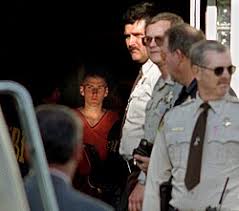
Breaking News
 Daniel McAdams - 'What I Learned from Ron Paul'
Daniel McAdams - 'What I Learned from Ron Paul'
 Can Trump Find a Way Out of the Box He Is in?
Can Trump Find a Way Out of the Box He Is in?
 BREAKING: BlackRock continues dumping hundreds of millions of dollars worth of Bitcoin $BTC
BREAKING: BlackRock continues dumping hundreds of millions of dollars worth of Bitcoin $BTC
 Neuroscience just proved:Dolphins have more brain than humans in the areas that process...
Neuroscience just proved:Dolphins have more brain than humans in the areas that process...
Top Tech News
 NVIDIA just announced the T5000 robot brain microprocessor that can power TERMINATORS
NVIDIA just announced the T5000 robot brain microprocessor that can power TERMINATORS
 Two-story family home was 3D-printed in just 18 hours
Two-story family home was 3D-printed in just 18 hours
 This Hypersonic Space Plane Will Fly From London to N.Y.C. in an Hour
This Hypersonic Space Plane Will Fly From London to N.Y.C. in an Hour
 Magnetic Fields Reshape the Movement of Sound Waves in a Stunning Discovery
Magnetic Fields Reshape the Movement of Sound Waves in a Stunning Discovery
 There are studies that have shown that there is a peptide that can completely regenerate nerves
There are studies that have shown that there is a peptide that can completely regenerate nerves
 Swedish startup unveils Starlink alternative - that Musk can't switch off
Swedish startup unveils Starlink alternative - that Musk can't switch off
 Video Games At 30,000 Feet? Starlink's Airline Rollout Is Making It Reality
Video Games At 30,000 Feet? Starlink's Airline Rollout Is Making It Reality
 Automating Pregnancy through Robot Surrogates
Automating Pregnancy through Robot Surrogates
 Grok 4 Vending Machine Win, Stealth Grok 4 coding Leading to Possible AGI with Grok 5
Grok 4 Vending Machine Win, Stealth Grok 4 coding Leading to Possible AGI with Grok 5
The Oklahoma City Bombing: A Lesson in Government Lawlessness

As the FBI website tells readers, a single ex-soldier named Timothy McVeigh acted alone, being motivated by anti-government sentiment that came in the aftermath of the Waco massacre two years earlier.
The FBI version, of course, is the official version and the one repeated in history books and in The New York Times. McVeigh was aided by Terry Nichols, who helped him build a large fertilizer bomb that they placed in a rented Ryder truck that was destroyed in the explosion. Michael Fortier gave McVeigh some logistic help, but no one else was involved, just the "lone wolf" McVeigh and a couple of friends.
Using the organization's vast investigative resources, the FBI quickly solved the case in the style of a Dick Wolf production. McVeigh had already been arrested when an alert policeman 90 miles away from Oklahoma City saw his getaway car had no license plate, so the FBI was able to get their man in custody. The original investigation also had McVeigh accompanied by a man called John Doe #2 when he rented the Ryder truck in Kansas, but soon afterward, the FBI insisted there had been no JD2, that he was a figment of the imaginations of everyone who said they saw him with McVeigh.
We know the rest of the story. McVeigh was convicted in federal court and executed at the federal prison in Terre Haute, Indiana, in 2001. Nichols was convicted both in federal court and Oklahoma state court, but juries deadlocked on the death penalty, so he is serving a life sentence at the fed's so-called supermax prison in Florence, Colorado. Fortier, who provided valuable information to the FBI, pleaded to lesser charges and served a short prison sentence before he and his wife were whisked away in the government's witness protection program. Case closed.
The FBI's narrative was useful on two fronts. First, the organization was able to regain prestige after the disaster at Waco by supposedly solving this horrendous crime quickly. Second, by being able to frame the bombing as the result of anti-government rhetoric that had spread following Waco and the 1992 FBI killings at Ruby Ridge, Idaho, the Bill Clinton administration, the Democratic Party, and their allies in the legacy media were able to use the bombing to claim that Republicans and other critics of the administration were responsible for the mayhem.

 HERE COMES THE MOTHERSHIP
HERE COMES THE MOTHERSHIP

